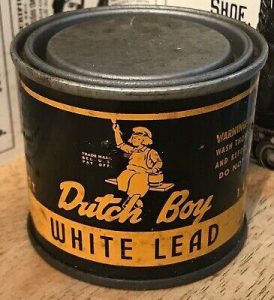 ERC has seen an uptick in requests for HUD-related lead-based paint inspections. It seems HUD is cracking down on housing authorities and other organizations who receive HUD funding, looking for proper documentation of these required inspections. Housing (single and multi-family) supported by HUD, built before 1978, is required to have lead inspection documentation on file.
ERC has seen an uptick in requests for HUD-related lead-based paint inspections. It seems HUD is cracking down on housing authorities and other organizations who receive HUD funding, looking for proper documentation of these required inspections. Housing (single and multi-family) supported by HUD, built before 1978, is required to have lead inspection documentation on file.
According to the Environmental Protection Agency (EPA):
- Approximately 64 million pre-1978 housing units contain some lead-based paint.
- An estimated 13.8 million housing units contain deteriorating lead-based paint.
- Although more than 60 percent of houses built between 1940 and 1979 contain some lead-based paint, the greatest risk is in housing built before 1940
The primary concern is for children under the age of 6 to be exposed to this toxic substance. For more information about the dangers of lead, please read our blog post Learn About Lead.
The occupational hazards of lead were first reported in 1713 by Barnardo Ramazzini, who described lead intoxication in potters working with lead glazes in the later part of the 1700s. Benjamin Franklin (who was a printer and handled lead type) described the toxic effects of lead on workers who used lead in their jobs. These workers included printers, plumbers, and painters.
Until lead was linked with severe neurological issues, it was widely used. Why was lead used in paint? It was used as a pigment, to add durability and corrosion control, and as a drying agent. Different types of lead determined the color of the paint (white, black, yellow, orange, blue, gray, red, and green).
The use of lead in paint declined in the US during the 1950s as titanium dioxide and latex paints became popular. Additionally, the lead paint industry established a voluntary industry standard for residential lead-based paint of one percent (1.0%) in 1955. This limit was adopted as a federal limit by Congress as part of the Lead-based Paint Poisoning Prevention Act in 1971 and was revised downward to 0.06 percent (0.06%) in 1978. This level of lead in paint is still in effect to use on interior and exterior residential surfaces, toys, and furniture. Although the use of lead-based paint, in particular on interior surfaces, has declined over the years, most housing units built before 1980 contain some lead-based paint.
HUD guidelines dictate lead-based paint of concern to be that which contains more than 1.0 mg/cm2 or 5000 ppm or 0.50 ppm percent by weight of lead. However, it is important to note that the Occupational Safety and Health Administration (OSHA) identifies paint containing any level of lead to be lead containing. As such, it is necessary for proper protection of workers during removal or any disturbance.
If lead-based paint is in good condition, there is little to worry about. The danger is if the paint is disturbed by deterioration or renovation. If deteriorated, the paint should be removed by a qualified lead abatement contractor. If it is going to be disturbed through renovation, a qualified lead abatement contractor must do the removal.
It is not necessary for all units to be inspected. The number depends on the age of the building(s) and how many units are in the complex. ERC can help with this determination and with your HUD lead inspections. ERC utilizes a handheld X-ray fluorescence analyzer to determine if there is lead in the paint. The testing is non-destructive, and results are immediate.
Resources:
